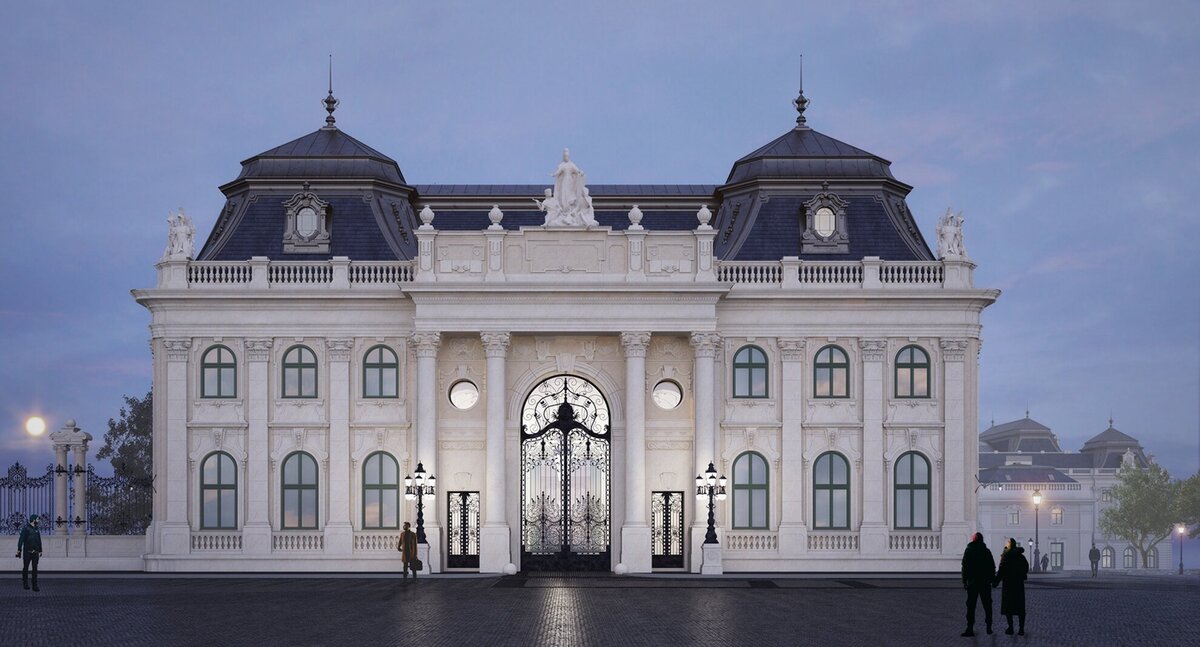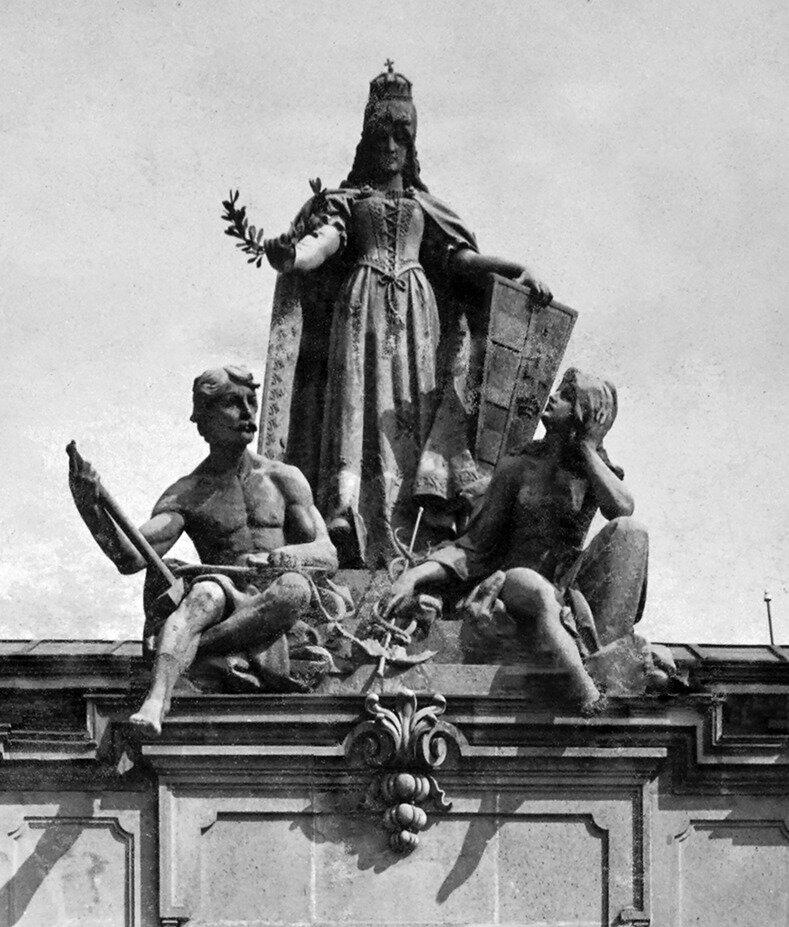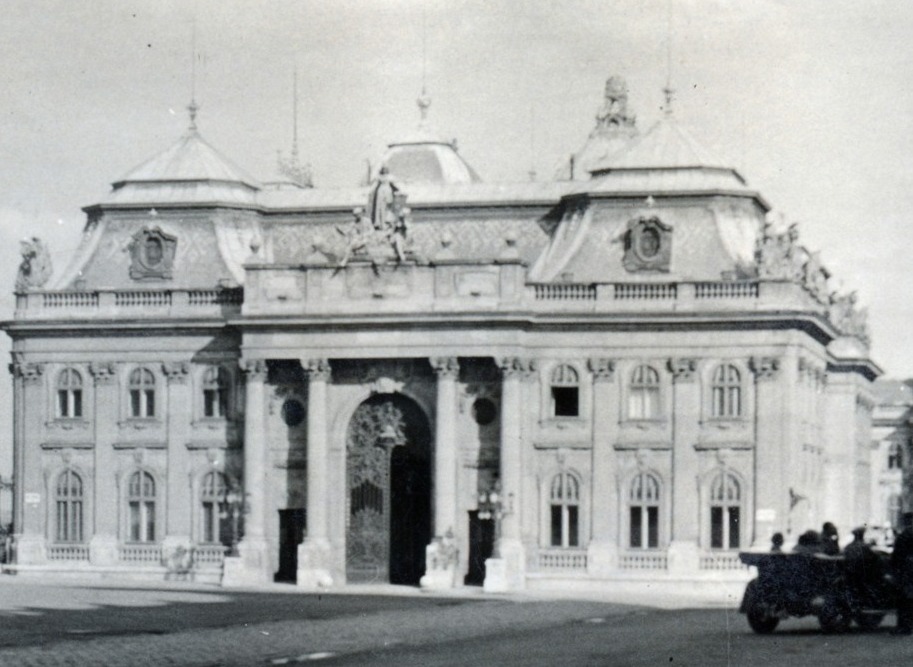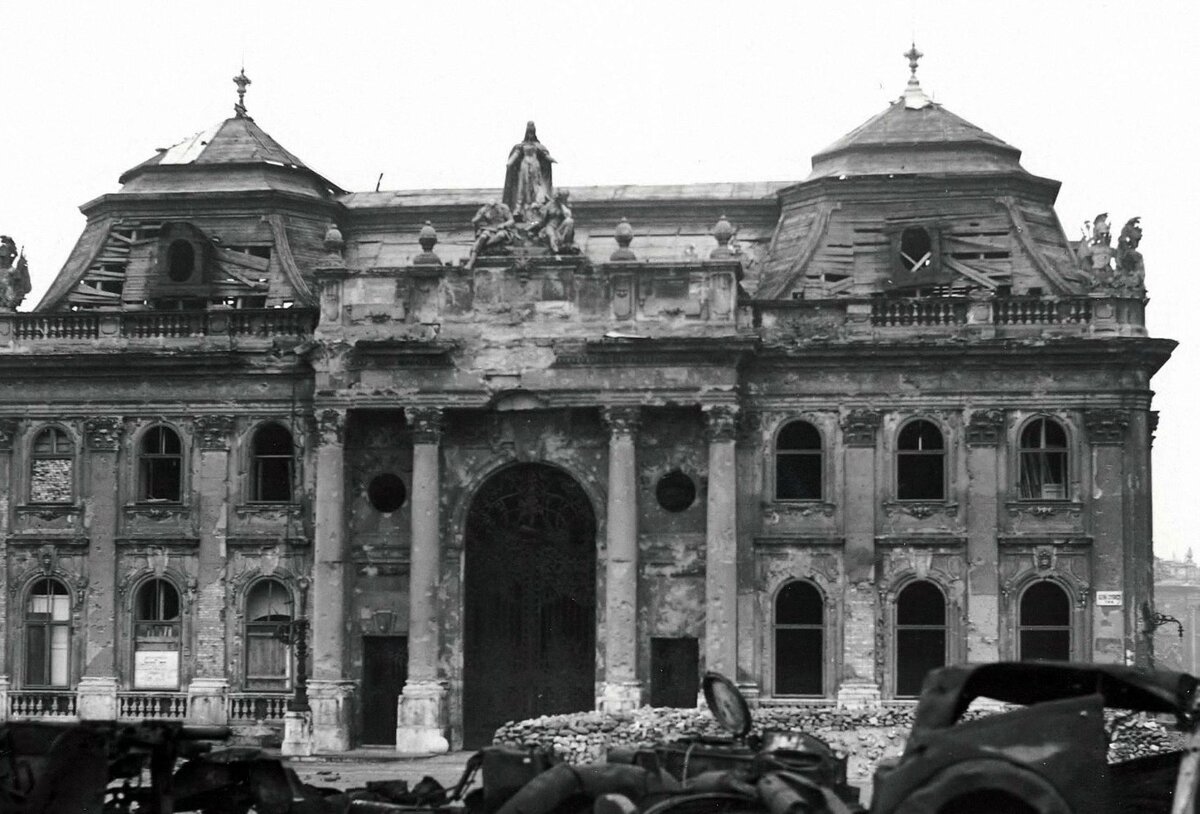PHOTOS: Iconic sculpture group returns to the astonishing Buda Castle

The “Hungária” sculpture group once crowned the grand entrance of the Royal Palace of Buda’s north wing. This masterpiece was tragically damaged during World War II and then lost during the communist era. Now, as part of the historic renewal of Buda Castle, plans are underway to restore the north wing to its former glory, with the reconstructed sculpture group set to reclaim its place above the iconic gateway.
The National Hauszmann Programme
Buda Castle stands as a symbol of Hungary’s rich cultural heritage, reflecting over 750 years of history marked by cycles of creation and destruction. Today, the National Hauszmann Programme aims to revitalise this iconic site, blending respect for tradition with modern restoration efforts. Between 2019 and 2021, the programme focuses on restoring public spaces, parks, and gardens, while reconstructing key historical structures like the Guardhouse and Riding Hall. More than a tourist attraction, the initiative aspires to return Buda Castle to the Hungarian people, creating a space in the heart of Budapest where everyone feels a sense of belonging.
About the iconic sculpture group
The National Hauszmann Programme shared delightful news on the return of an iconic sculpture group to the Buda Castle. When the Royal Palace of Buda underwent expansion, architect Alajos Hauszmann designed a grand main entrance for the north wing’s Szent György Square façade, inspired by Roman triumphal arches. Crowning the stunning Art Nouveau wrought iron gate by Gyula Jungfer is the “Hungária” sculpture group, created by sculptor Gyula Jankovits. This masterpiece celebrates the glory of Hungarian industry and trade, which were instrumental in the palace’s construction. Installed in 1899, the sculpture group was carved from four stone blocks sourced from the Salskút quarry and placed atop the attic of the north wing’s main entrance.

Source: Arcanum
The centrepiece of the composition is an allegorical figure of Hungária, depicted as a woman in traditional Hungarian attire with the Holy Crown on her head. She holds a laurel wreath, symbolising glory and victory, in one hand, and a small Hungarian flag in the other, acting as a protective shield. To her right, a male figure represents Hungarian industry, equipped with a chisel and hammer, while to her left sits an allegorical female figure symbolising trade, holding a messenger’s staff, the ancient emblem of commerce. This sculpture group not only enhances the architectural grandeur of the palace but also embodies Hungary’s cultural pride and historical achievements.

Source: Fortepan
A sorrowful past
During World War II, the north wing of the Royal Palace of Buda and its gateway suffered damage, with parts of the “Hungária” sculpture group broken off, though much of it initially survived. However, in the post-war communist era, the sculpture group was removed, destroyed, and lost for ideological reasons. The north wing was also stripped of its historicist features, rebuilt in a simplified style, and significantly altered, including the removal of the original main entrance on Szent György Square. As part of the ongoing historic renewal of Buda Castle, the north wing will be reconstructed based on Alajos Hauszmann’s original designs, with the restored “Hungária” sculpture group reclaiming its prominent position above the northern gateway.

Photo: Facebook / Nemzeti Hauszmann Program
Source: Fortepan

Photo: Facebook / Nemzeti Hauszmann Program
Read also:
- PHOTOS: Unique artifacts unearthed at Buda Castle during restoration efforts
- Renewed Budapest Citadel will look breathtaking – PHOTOS
Source:





